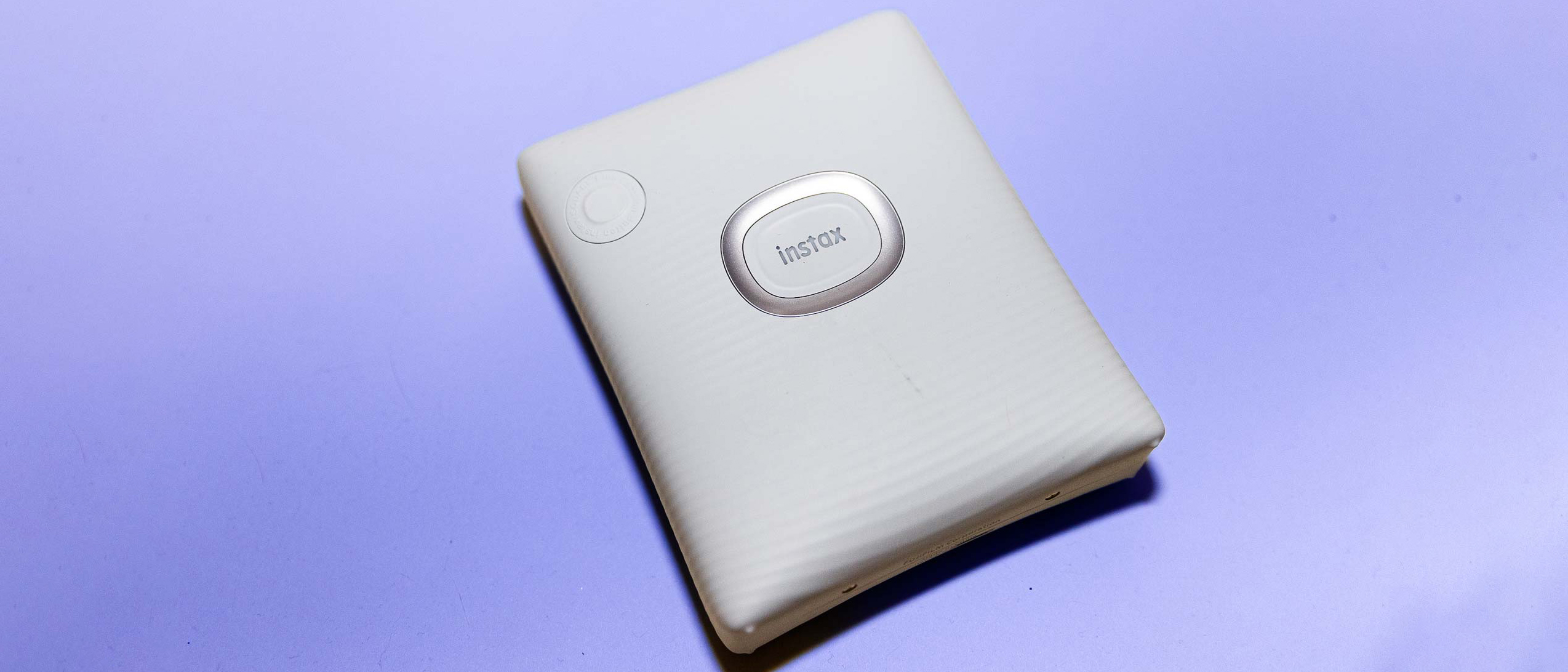Tom's Guide Verdict
The Fujifilm Instax Square Link creates beautiful prints in a compact and easy-to-use package. There are some gimmicky app features and users will be forced to purchase pricey print packs, but overall it’s a very strong package.
Pros
- +
Easy to use
- +
Uses beautiful Instax Square film
- +
Great print quality
- +
Effortless smartphone integration
- +
Strong battery life
Cons
- -
Film packs are pricey
- -
Superfluous sharing and AR features
Why you can trust Tom's Guide
Film: Prints on Fujifilm Instax Square film
Speed: 12 second print time
Battery life: Can print approximately 100 images on a fully charged battery
Bluetooth Ver: 4.2
Battery: Lithium ion battery
Ports: USB Type C charging
Unit dimensions: 105mm x37.5mm x 127.5mm
Weight: 236 g
Fujifilm’s Instax Square Link is a smartphone printer designed to stop memories getting lost forever in your phone’s camera roll. Instead, by pairing effortlessly to your smartphone, the printer allows you to keep or share those memories tangibly. As a printer only, the Instax Square Link enables higher quality prints than can be achieved by using even the best instant cameras, as users can select images that have been taken using higher resolution sensors in smartphones or cameras.
The compact Instax Square Link is the third Link printer released by Fujifilm. Designed to work with Fujifilm’s Instax square format film, it rounds out Fujifilm’s line of bluetooth printers, meaning each Instax film format now has a dedicated printer.
While the Instax Square Link worked extremely well in our testing, it isn’t perfect, and there are certain aspects of the printer and app that are either superfluous, or might not make it the right printer for you. Keep reading for our full Instax Square Link printer review.
Fujifilm Instax Square Link review: Price & Availability
The Fujifilm Instax Square Link printer costs $140 and is available now in Ash White and Midnight Green colorways through a variety of online-retailers. The printer’s pricing means it sits between the two Instax Link bluetooth printers that came before it. There are three Fujifilm Instax print formats — mini, square and wide — which scale in price respectively. The Fujifilm Instax Square, as its name suggests, uses the middle-sized Square format, so its intermediate price point makes sense.
Fujifilm Instax Square Link review: Design
The best portable printers have to be diminutive, and the Fujifilm Instax Square Link certainly meets the mark. The printer measures only 105mm x 37.5mm x 127.5mm, making it compact and travel-friendly. Overall the printer has a design that is sleek and easy to use. On the top of the printer you will find a large Instax button for powering on and off. A smaller circular button called the Function Button can be found at the top left of the printer. Holding this button for two seconds will automatically reprint the last image, making it easy to create duplicates to share with friends. On the right hand side you will find the USB charging slot. The Instax Square Link printer uses a USB Type C charging cable, and features a rechargeable lithium ion battery which performs very well, printing approximately 100 Instax pictures from a full charge.
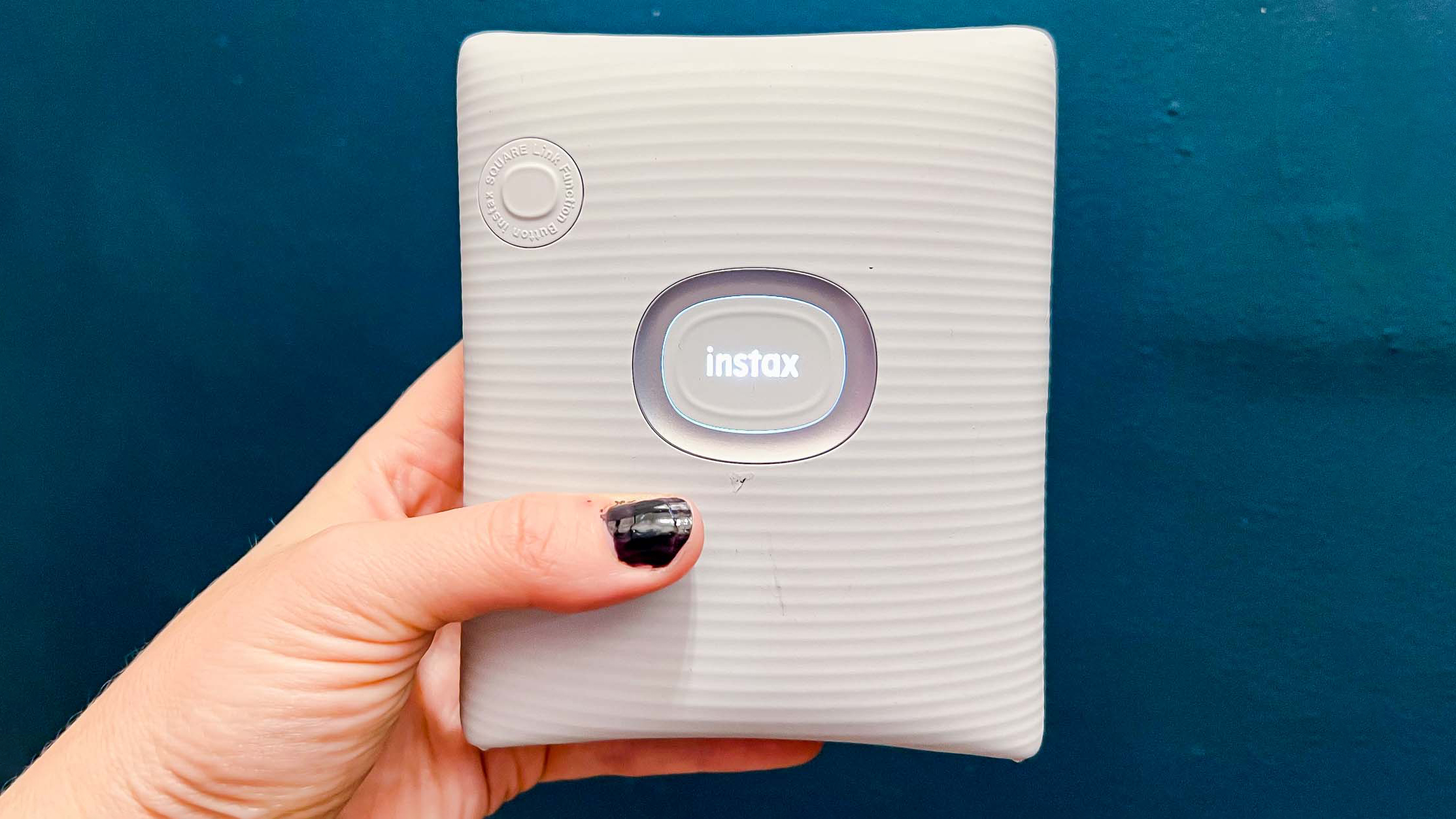
Fujifim’s Square Instax film packs load into the back of the printer. Because everything you need to make a print is contained within the Instax film packs there is no need to worry about refilling inks — another convenient feature.
Fujifilm Instax Square Link review: Print speed
The Fujifilm Instax Square Link performed well during our speed tests. The printer connects to your phone via Bluetooth and then takes approximately 12 seconds to print each image after pressing the print button inside of the Instax Square Link app. It will take approximately 90 seconds for each piece of Instax film to fully develop.
Get instant access to breaking news, the hottest reviews, great deals and helpful tips.
Fujifilm Instax Square Link review: Print quality and aesthetic
The Fujifilm Instax Square Link’s print quality, like other Instax Link printers, depends a lot on the age of the film packs that have been loaded into the back of the printer. Older film packs that haven’t been properly stored are more likely to yield results with strange color shifts or areas where the Instax emulsion has been damaged. During our time testing the Fujifilm Instax Square Link printer, we were using a fresh pack of Instax Square film and the quality results were excellent. The Instax Square Link did a great job of recreating the colors and details of the images that we printed from our phone’s camera roll.
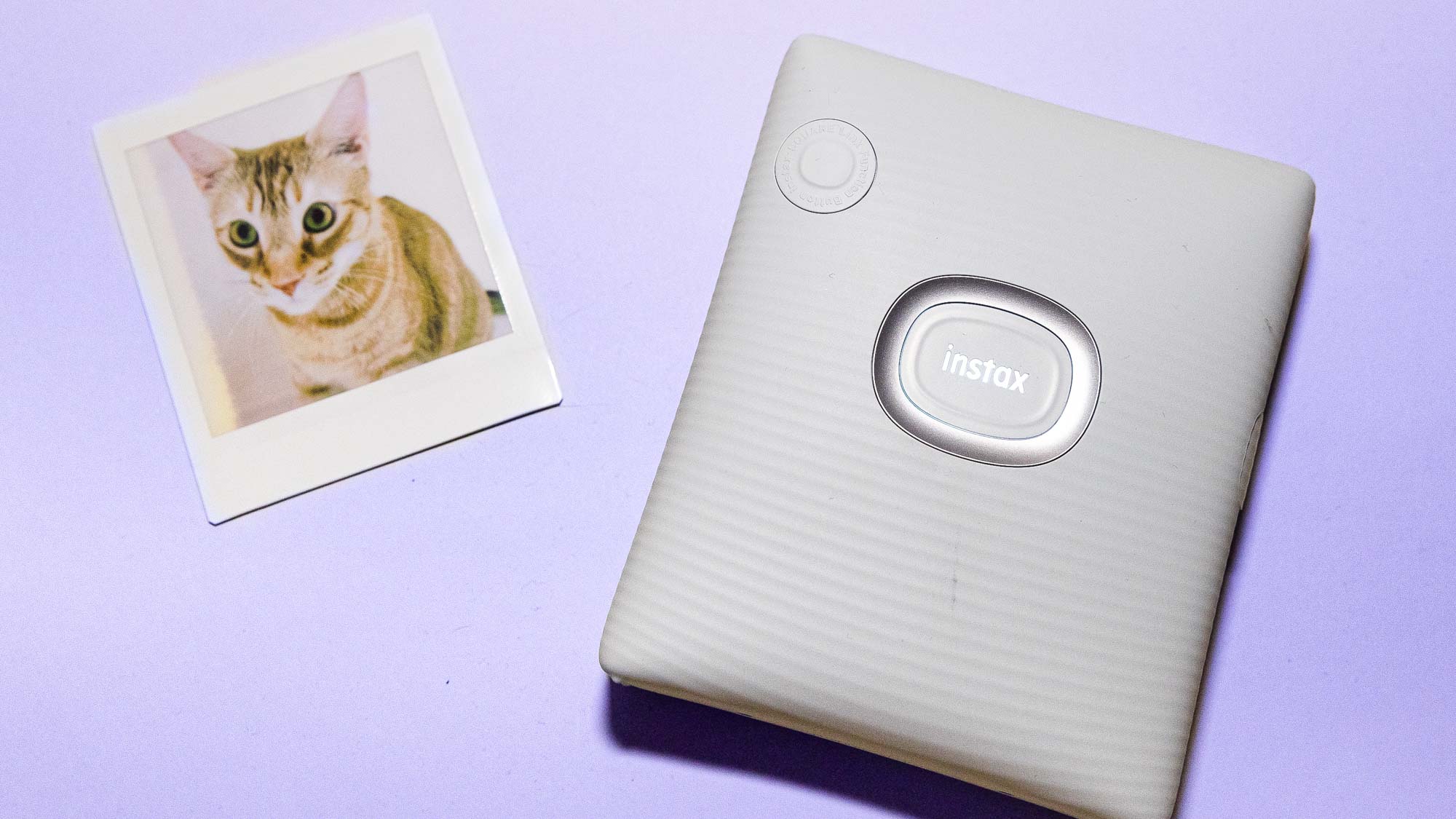
Whether the Instax line is right for you depends on the aesthetic you want from your prints. Instax papers have a glossy finish, render colors and details accurately and provide a good level of contrast, so we prefer them to the rival papers, such as ZINK.
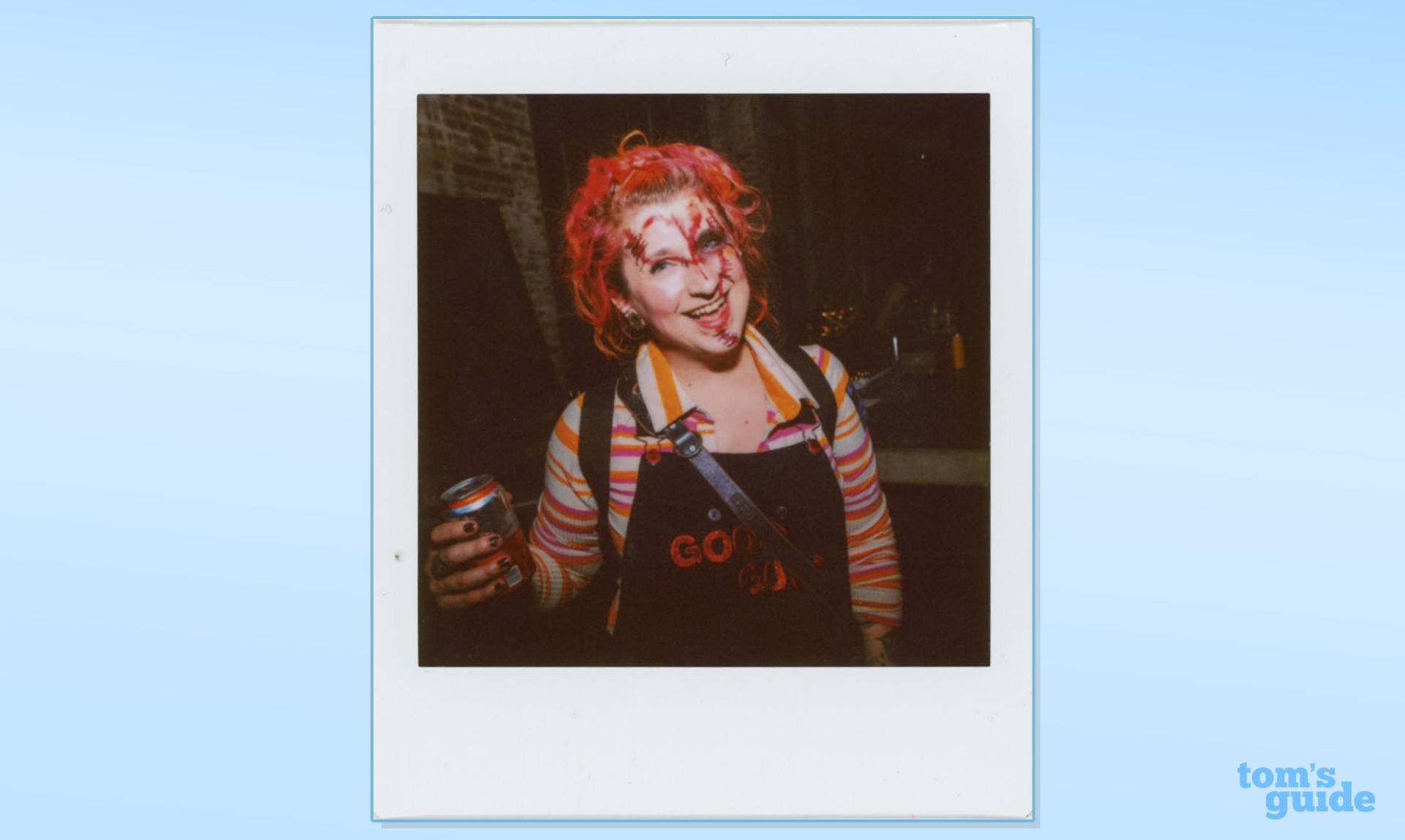



Whether this particular Instax model is a good fit will depend largely on the Instax print format that you like best: Mini, Square or Wide. This is the first Link device to utilize the Instax Square format film, which is the most reminiscent of classic instant film formats like Polaroid, so we would recommend this particular printer for folks looking for a classic style of print or nostalgic aesthetic.
Fujifilm Instax Square Link review: Film cost and yield
The Fujifilm Instax Square Link uses Instax Square film packs, which generally cost about $20 per double film pack (20 pieces of film), meaning you are paying about $1 every time you make a print. This makes Instax film more expensive than what’s used by other smartphone printers, so if you’re on a tight budget or want to print lots, you may wish to find a cheaper alternative. Otherwise, the top notch quality and filmic style of Instax Square Link may make it well-worth the price, especially if you like the retro feel.
Fujifilm Instax Square Link review: Setup and App Functionality
The Fujifilm Instax Square Link is operated through the SQUARE Link app. Once the printer is on and the app is open, connecting the two together is an extremely straightforward process. The app has a streamlined design that makes it very easy to operate. The SQUARE Link app shows you nearby devices that can be connected and you simply confirm the printer to connect. The app then displays useful information such as how many prints are left in your filmpack and the remaining battery life of the printer.
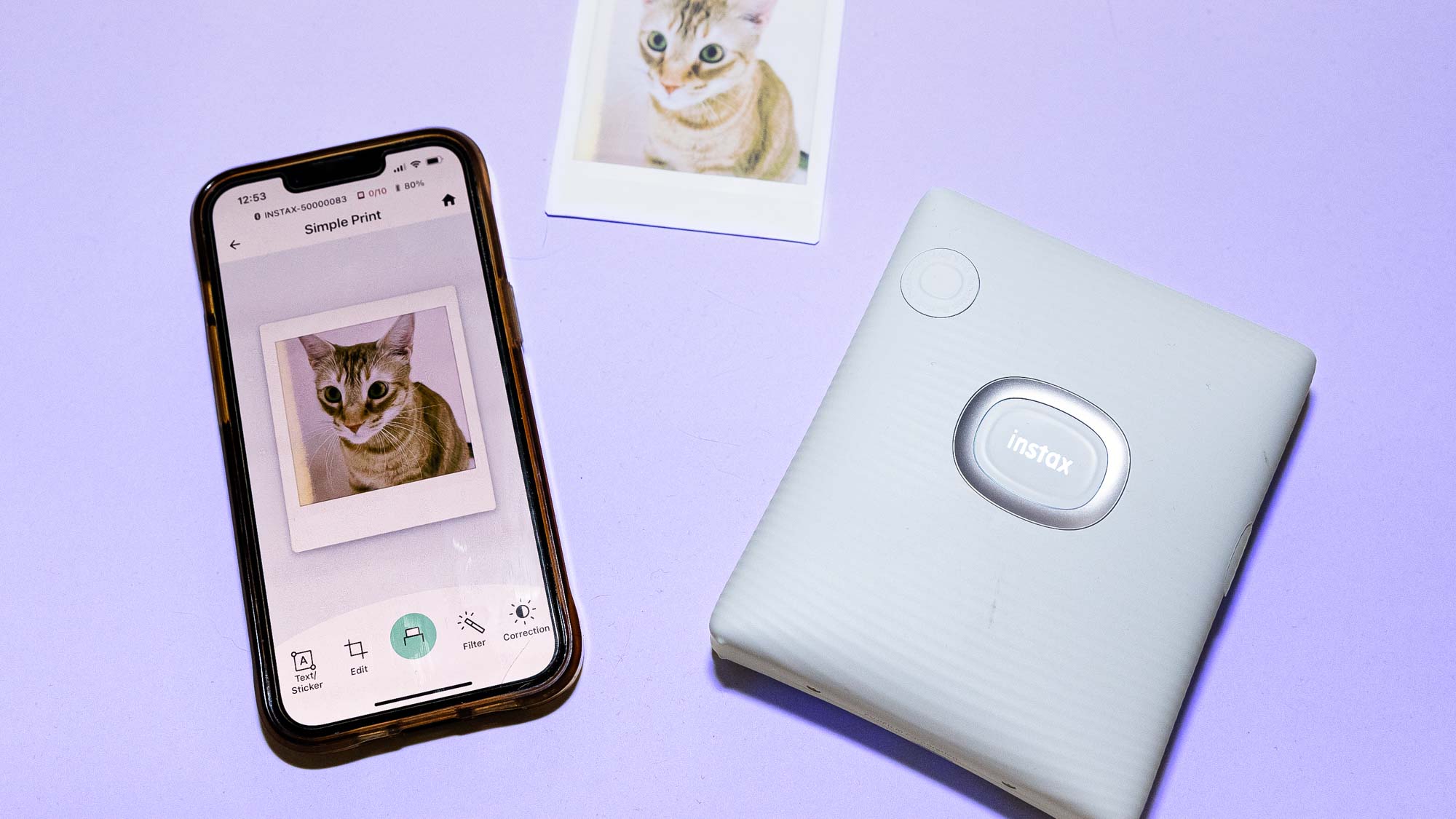
The SQUARE Link app offers numerous ways to customize images. There are creative features like decorative digital stickers and frames, print mode options, and photo editing tools. The photo editing tools are easy to use and extremely useful, allowing simple edits to images before printing, like adjusting brightness, contrast and saturation, cropping or rotating.

As is standard when a new Instax Link printer launches, Fujifilm has included some advanced printing features that are exclusive to the Instax Square Link printer: AR Print and Instax Connect. These features can only be accessed through the SQUARE Link app and are easy to access and operate, but seem relatively superficial.
AR print lets users add special effects, text, images and doodles to a print that can only be viewed by scanning a QR code on the print. It essentially gives an interactive element, as you’d find in an Instagram story or TikTok feature, to the tangible prints that you’ve just created. Although this feature is cute and might be fun for the first couple of uses — it could be used to send notes to friends or family members during the holidays, for example — its long-term potential is questionable. Similar effects are employed much better and more extensively by the apps that AR Print is looking to emulate or replace, while those buying this printer are likely more interested in a physical printing and sharing experience rather than a digital one in the first place. That’s the purpose of the printer, after all.
Another obvious drawback is that using this feature adds a QR code to the image to activate the AR effects on a mobile device. Your beautiful Instax prints consequently have to include a goofy QR block somewhere on the frame. You can choose the location of the QR code on the print, but you can’t remove it or adjust its size.

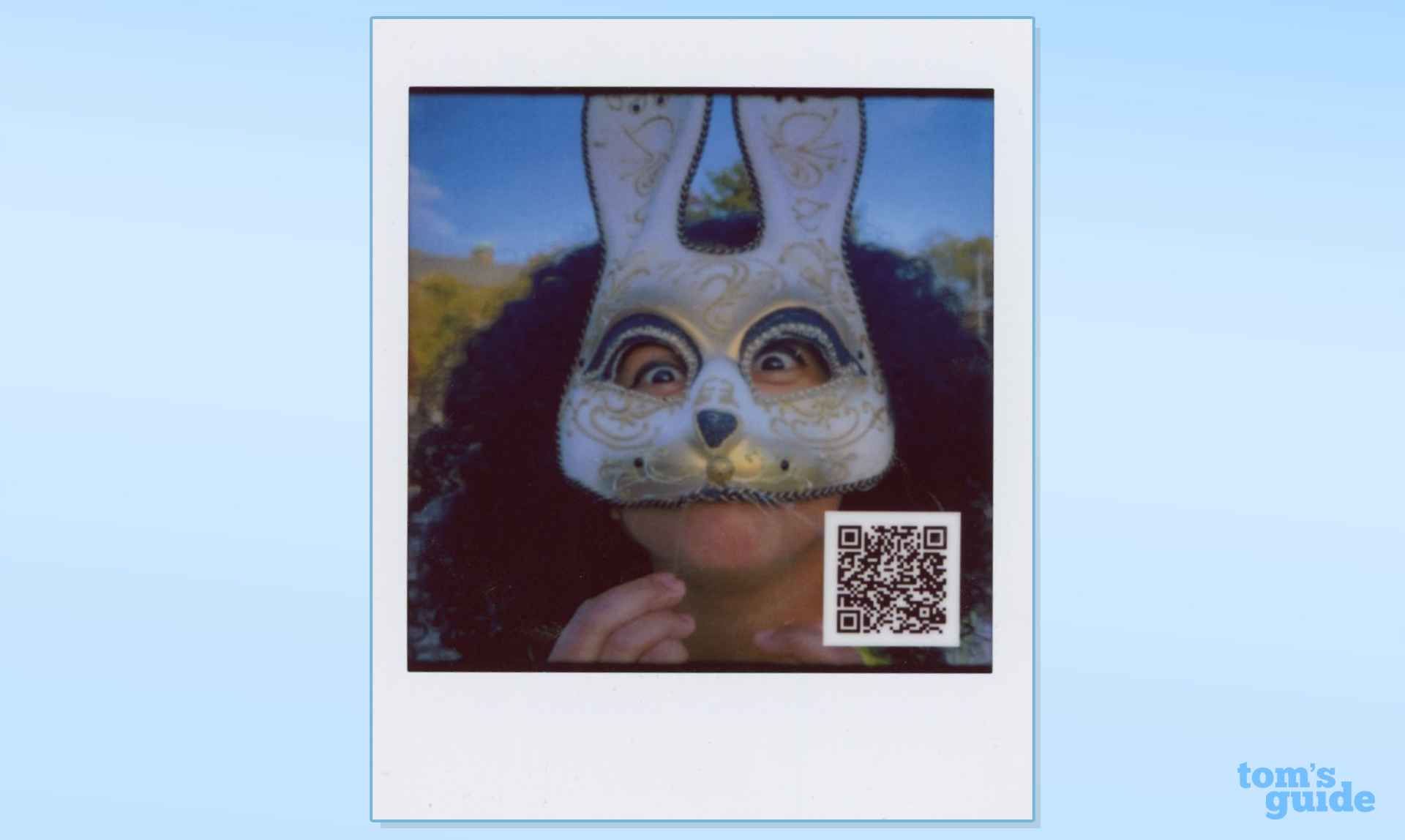
The Instax Connect feature allows you to share your Instax images with text digitally via the SQUARE Link app. Recipients can open them up and respond via their own app, and if they have a printer they will be able to print them as well. Unlike the AR Print feature, the Instax Connect feature doesn’t require you to print a QR code on the image to activate the message it contains, ostensibly making this sharing feature a little more appealing, but in order to view the message users will have to still download the app.
While the Instax Share feature is a fun way to send images to friends, it feels somewhat gimmicky and superficial. Again, the whole philosophy of this printer is that, ultimately, it’s more rewarding to hand friends and family a tangible print rather than sharing a digital image through yet another app. What’s more, the printer’s digital sharing potential is severely limited in the first place, as recipients must download the Instax SQUARE app to see messages, and are unable to print them without owning this particular model of printer.
Fujifilm Instax Square Link review: Verdict
The Fujifilm Instax Square Link is portable, easy to use and is capable of higher quality prints than what one might get from using an Instax instant camera, thanks to the ability to print from digital images. This is an excellent and straightforward wireless printer to use with your phone and although the interactive elements are gimmicky, they don’t take away from the fantastic quality and functionality of the product, nor the overall experience of using it. Print media is pricey, so those on a tight budget may wish to consider other options, but we think that’s justified by the end-quality and gorgeous retro aesthetic. Ultimately, if you want beautiful, classic-style prints to share memories that so often get lost in your smartphone camera roll, this is a great tool for the job.

Jeanette D. Moses is a New York based filmmaker and photographer known for capturing the intimacy of New York City's creative communities. She has been freelancing for Tom's Guide since 2020. She loves shooting music, tinkering with new technology, all things analog, and learning about archaic photographic processes. She’s been photographing the music scene in New York City since 2012 and began writing about photography shortly after. In addition to Tom’s Guide, her stories have been published on Pop Photo, DP Review, Digital Photo Pro and The Phoblographer. In 2021 she was selected as one of Dr. Martens Filmmakers of the Year to direct a film about New York City's DIY music scene.
